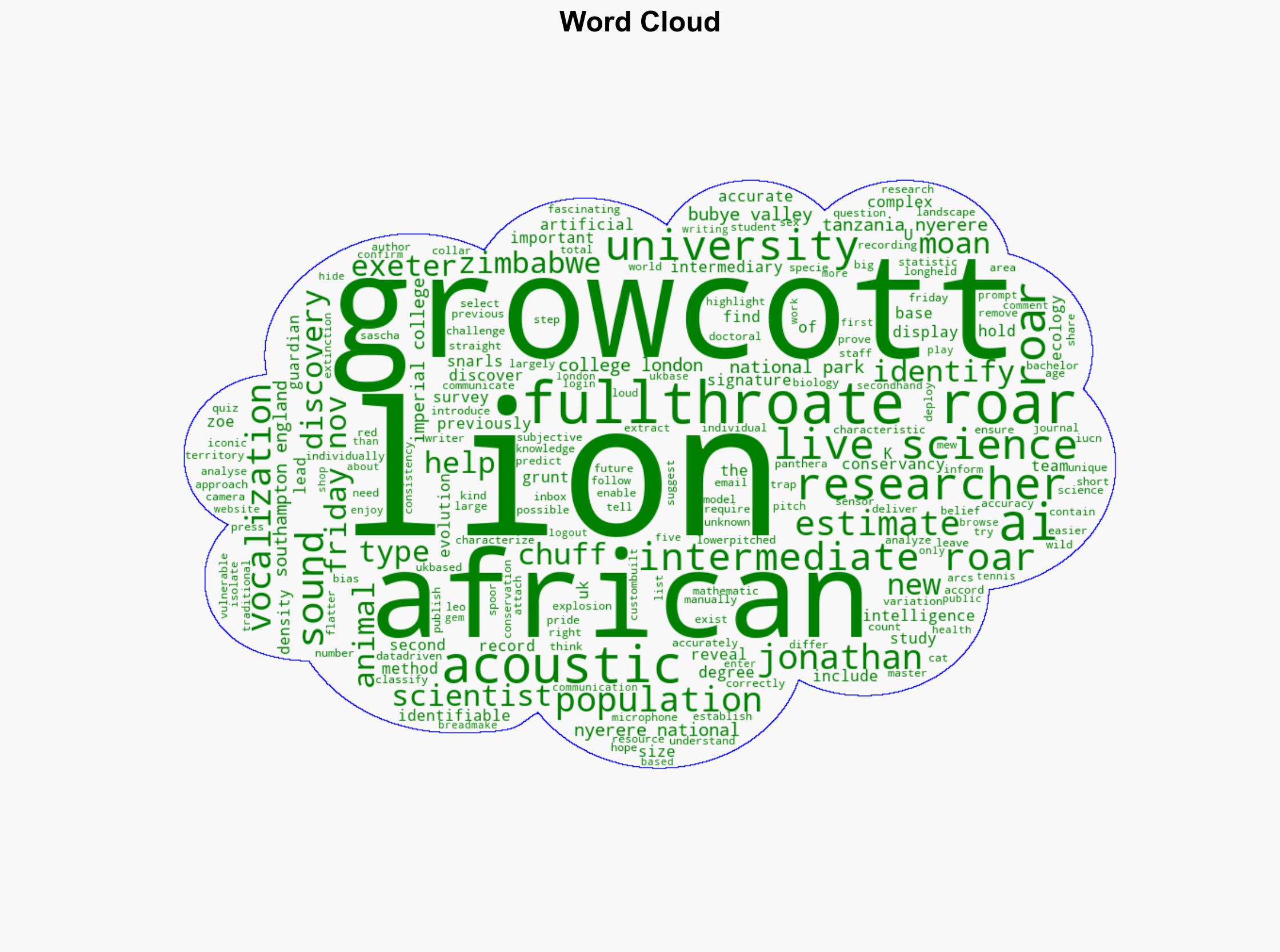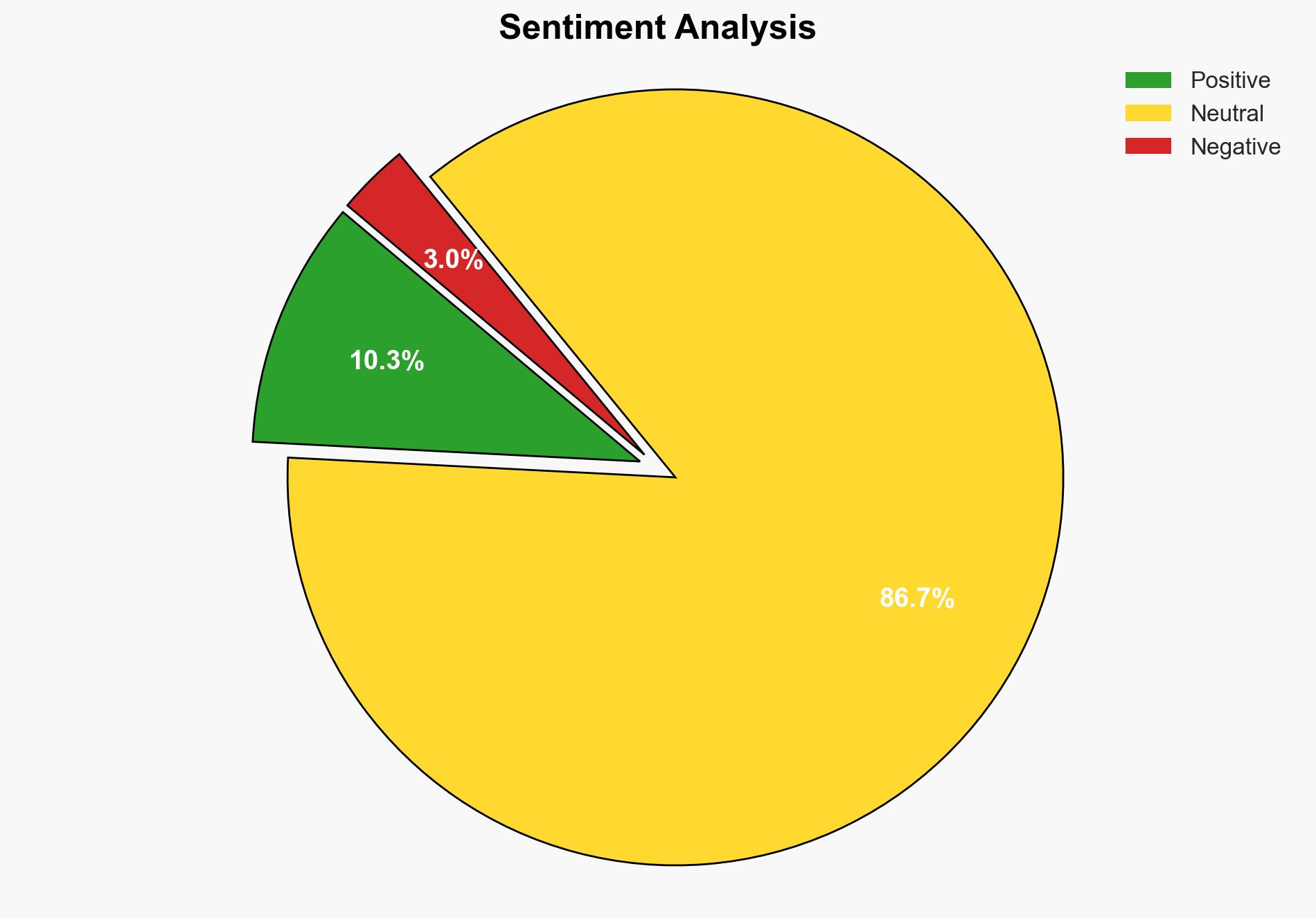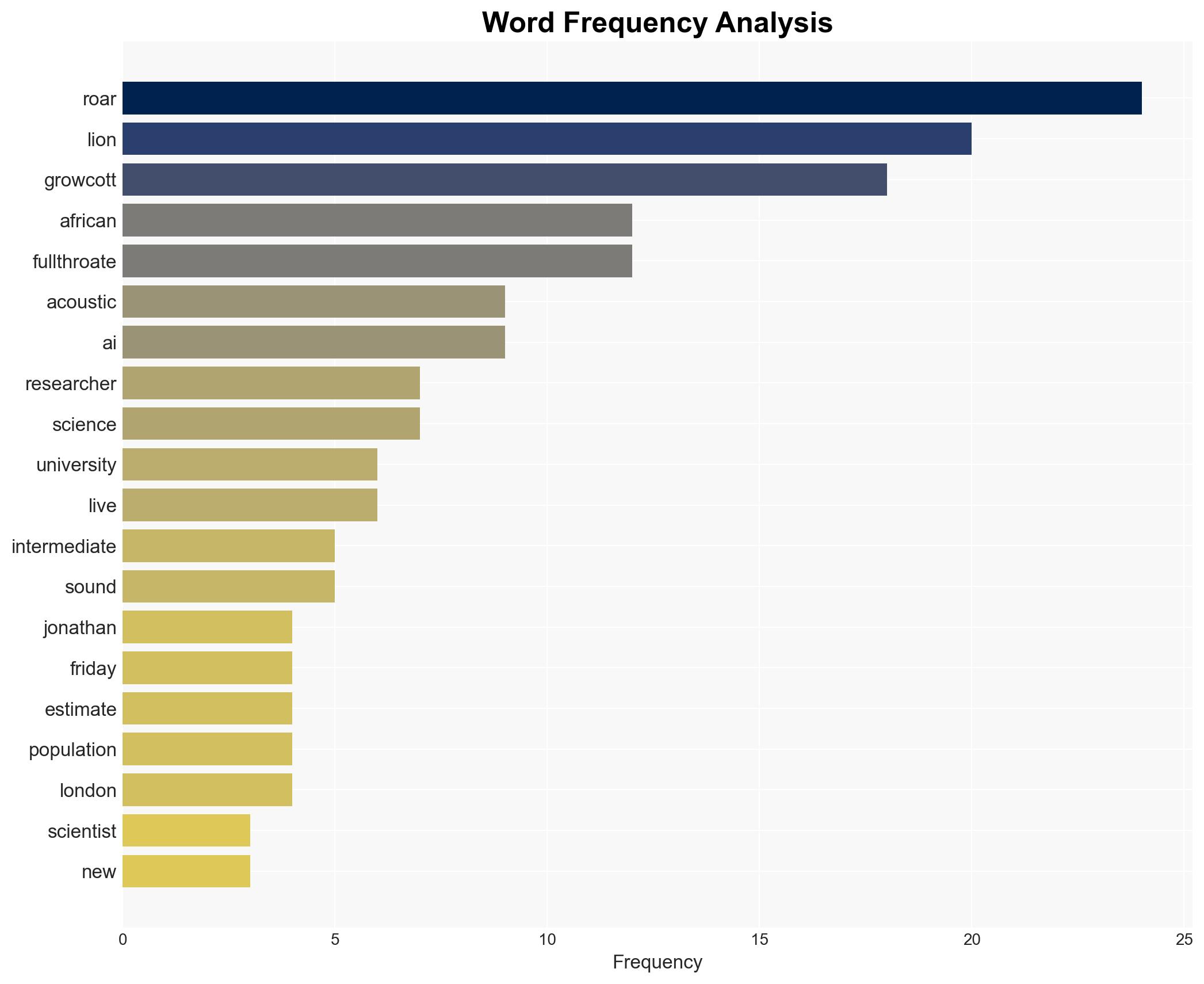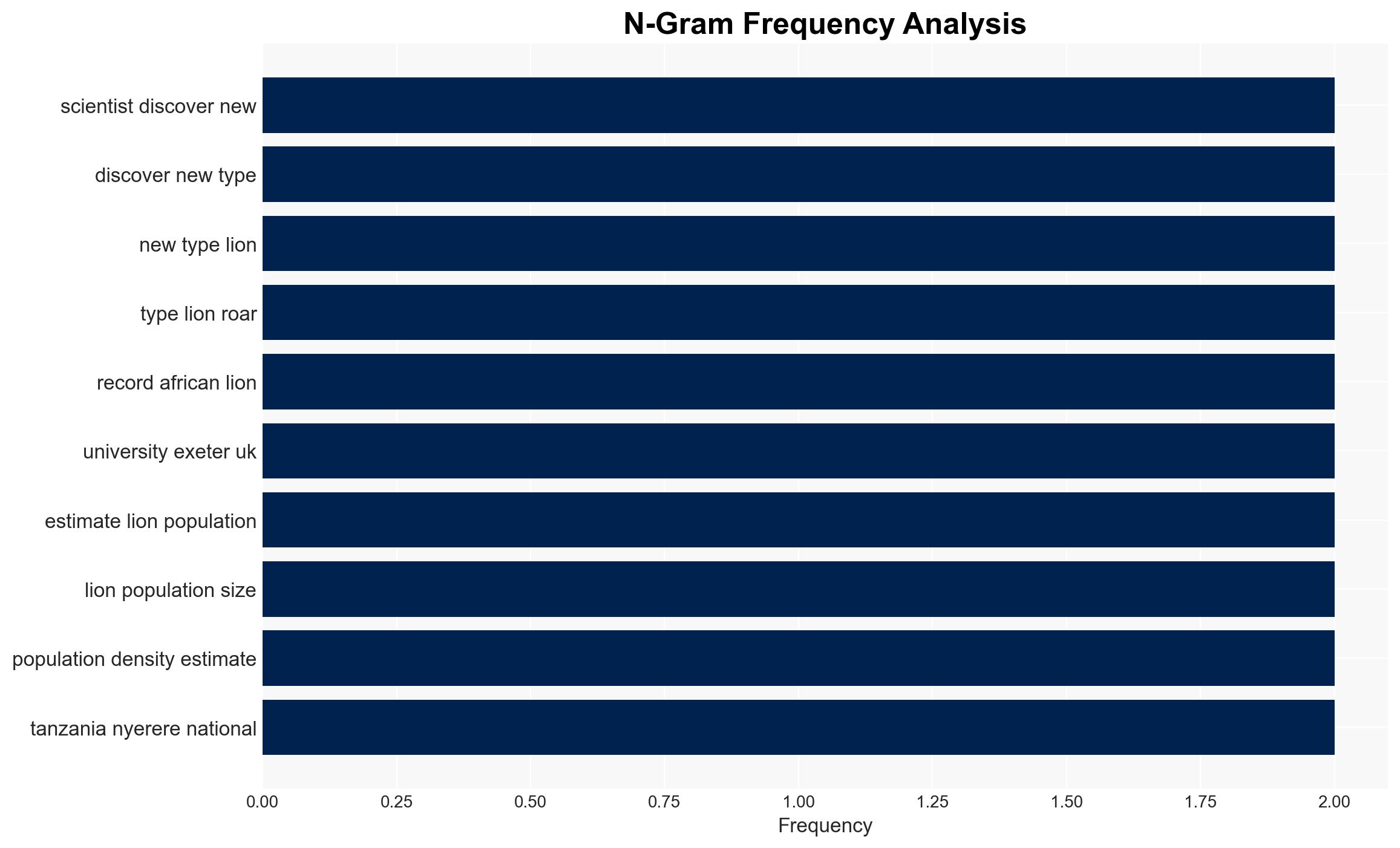Scientists discover new type of lion roar
Published on: 2025-11-21
AI-powered OSINT brief from verified open sources. Automated NLP signal extraction with human verification. See our Methodology and Why WorldWideWatchers.
Intelligence Report: Discovery of New Lion Roar Type
1. BLUF (Bottom Line Up Front)
The discovery of an intermediate lion roar type has significant implications for wildlife conservation and population estimation. The most supported hypothesis is that this discovery will lead to more accurate population density estimates, enhancing conservation efforts. Confidence Level: Moderate. Recommended action includes integrating this new data into existing conservation strategies and further developing AI tools for wildlife monitoring.
2. Competing Hypotheses
Hypothesis 1: The intermediate lion roar discovery will significantly improve the accuracy of lion population estimates, aiding conservation efforts.
Hypothesis 2: The discovery will have minimal impact on conservation efforts due to potential challenges in deploying the technology or integrating new data into existing frameworks.
Hypothesis 1 is more likely due to the potential of AI to enhance data accuracy and the critical need for improved population estimates given the vulnerability of African lions. However, technological and logistical challenges could impede immediate implementation.
3. Key Assumptions and Red Flags
Assumptions include the reliability of AI in accurately classifying lion vocalizations and the willingness of conservation bodies to adopt new methodologies. Red flags include potential over-reliance on AI without sufficient validation and the risk of technological deployment challenges in remote areas. No clear deception indicators are present, but the novelty of the discovery warrants cautious optimism.
4. Implications and Strategic Risks
The discovery could lead to improved conservation strategies, potentially increasing funding and international support for lion conservation. However, failure to integrate this new data could result in continued inaccurate population estimates, exacerbating the risk of extinction. There is also a potential for increased cyber threats targeting AI systems used in wildlife monitoring.
5. Recommendations and Outlook
- Develop partnerships with tech companies to enhance AI tools for wildlife monitoring.
- Conduct pilot studies to validate the effectiveness of using intermediate roars in population estimates.
- Best-case scenario: Successful integration leads to a significant improvement in population estimates and conservation strategies.
- Worst-case scenario: Technological and logistical challenges prevent effective implementation, leading to continued inaccurate estimates.
- Most-likely scenario: Gradual adoption of the new methodology improves estimates over time, with incremental conservation benefits.
6. Key Individuals and Entities
Jonathan Growcott, lead author and doctoral student at the University of Exeter, is a key figure in the study. The University of Exeter and conservation bodies in Tanzania and Zimbabwe are pivotal entities in this research.
7. Thematic Tags
Cybersecurity, Wildlife Conservation, Artificial Intelligence, Population Estimation, African Lions, Acoustic Monitoring
Structured Analytic Techniques Applied
- Adversarial Threat Simulation: Model and simulate actions of cyber adversaries to anticipate vulnerabilities and improve resilience.
- Indicators Development: Detect and monitor behavioral or technical anomalies across systems for early threat detection.
- Bayesian Scenario Modeling: Quantify uncertainty and predict cyberattack pathways using probabilistic inference.
- Cognitive Bias Stress Test: Structured challenge to expose and correct biases.
Explore more:
Cybersecurity Briefs ·
Daily Summary ·
Support us





